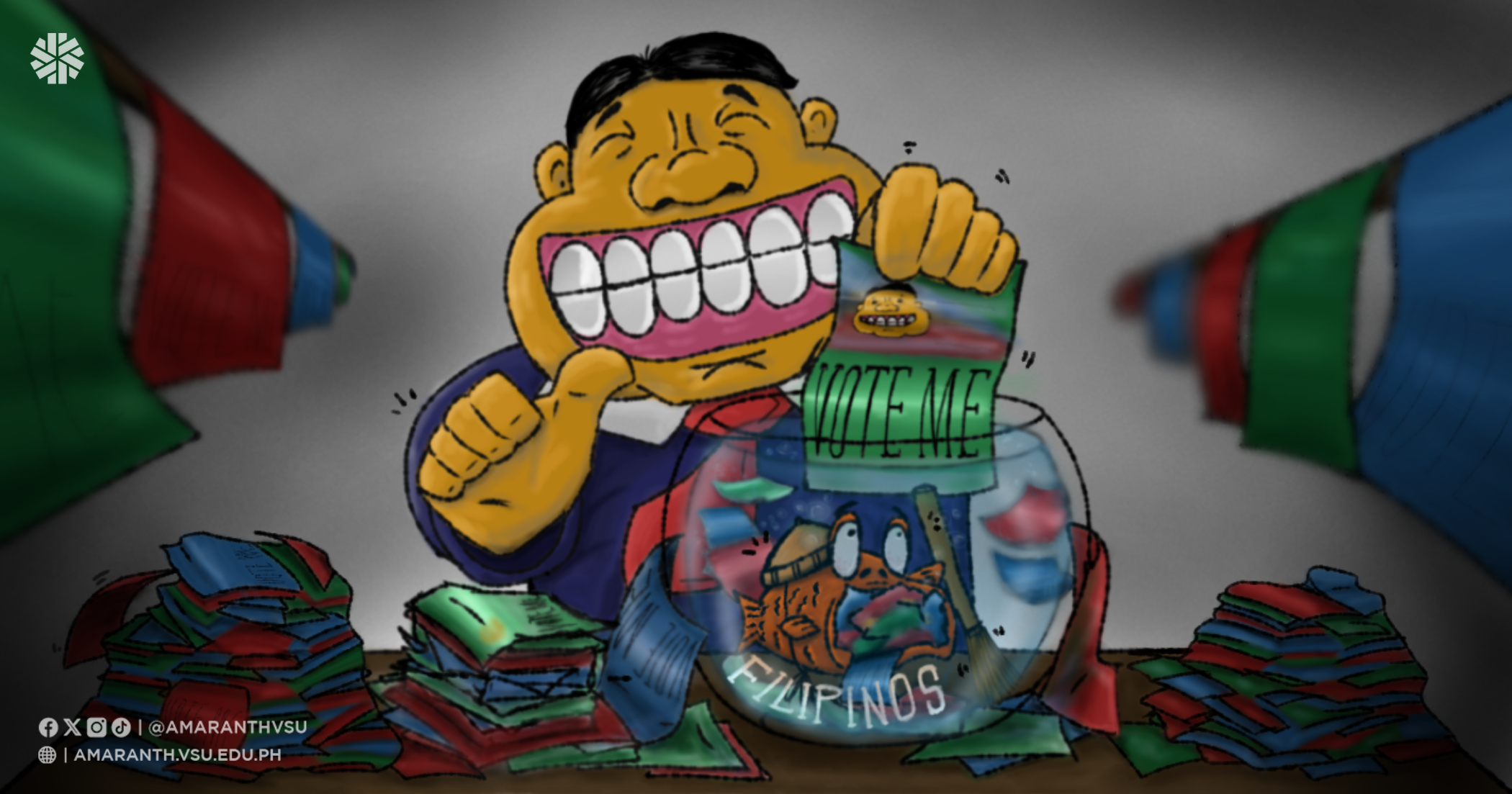A familiar picture every election season is the barrage of tarpaulin posters of a politician’s wide grin and large neon name, hanging overhead like a barangay’s fiesta decoration. It may be waving with the wind or attached on a sari-sari storefront, or plastered on every outdoor wall possible; the same face for about five meters, with no regards to space.
This has been the usual scene for a democratic electoral country like the Philippines and has been for decades. With the upcoming 2025 midterm elections, aspiring candidates strive to make their faces and names known in as much urban land as possible. This has been the norm, and all it takes is for the regular Filipino to subconsciously engage with these brightly-colored posters while going about their day.
As per COMELEC policies, every candidate and party are given 5 days to clean and retrieve their campaign materials after election day. However, even years have passed, many of these materials are still hanging on public places or scattered in the wind, and when left unchecked for a longer time, it becomes an environmental threat.
Campaign posters are usually made of either low-density polyethylene (LDPE) film, high-density polyethylene (HDPE), polyvinyl chloride (PVC), or polyethylene terephthalate (PET). Thinner plastic posters are usually made of LDPE or PET, both of which already exist at a great density outside campaign seasons, as they are preferred heavily in packaging for their cheapness. Prints of a thicker and denser nature including billboards and tarpaulins, are made of either HDPE or PVC.
Of these plastics, PVC is said to be the most harmful one. Its manufacturing process alone releases chlorine gas–a toxic, pulmonary irritant, affecting the pulmonary tract with mucous irritation–all while being much more difficult to dispose of after it has fulfilled its purpose. Unlike PET, which can be recycled with a little bit of creativity and the incentive of a recycling contest, PVC contains harmful additives that make it a less ideal entry to these contests.
During the 2022 presidential elections, EcoWaste Coalition found PVC posters containing cadmium, a carcinogen listed by the World Health Organization (WHO) as a major public health concern due to its risks to the kidneys, skeleton, and respiratory system, even at low exposure.
Campaign prints not made of PVC are not safe either. Though many attempt to recycle or simply repurpose these tarpaulins and posters, the sheer density at which they are plastered on Philippine streets leaves a great majority of them deserted. In 2022, 18-20 tons of campaign posters were being collected daily after the elections. These posters remain long after the end of campaign seasons, aging on public walls and electrical posts.
Due to the nature of plastics being non-biodegradable, mere disposal of plastics, including campaign posters, would not get rid of them completely, even as macroplastics. Plastics join the many other solid waste accumulating Philippine urban areas, clogging up street canals, water ways, and drainage systems. This waste intensifies the floods from storms that frequent it. But as microplastics, they can be consumed by marine organisms, returning as hidden, toxic microplastics in human food.
Campaign posters, however, are only one part of many other compromises made to the environment during the campaign season – not accounting for the instances of premature campaigning. The dangers of plastic remaining in the environment and only disintegrating further into undetectable microplastics are heightened when some of these posters are nailed to trees. The Department of Environmental and Natural Resources (DENR) was able to dismantle 114,000 campaign materials posted on trees from the 2022 elections alone.
In time for voting, the advantage becomes clear when the potential voter can recall the candidates’ face and name best. However, even when the campaign season ends, these election prints become discarded to no one’s concern, and even less to the winning candidates themselves, who paid millions to put them up and benefitted from the constant promotion of their name.
But from here on, there should be a change, a shift towards the prioritization of eco-friendly alternatives to electoral prints, and even to equipment used in campaigning rallies. The truth is, those we elect often demonstrate a lack of environmental responsibility before being elected, much more when they’re already in position.


